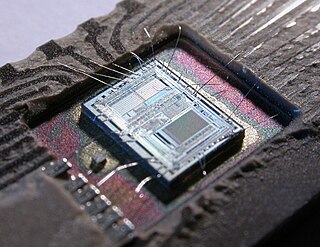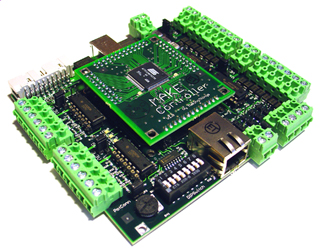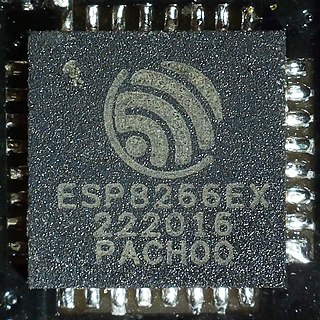Uni-family
Around 1987, Data I/O introduced the first of the 'Uni-family' programmers in the form of the 'Uni-site.' This was their first engineering programmer to feature software-programmable pin drivers, a technology that allows any pin of the device socket to be configured, through software, for power, ground, or nearly any type of programming waveform.
The first model in this line, the Unisite-40, featured a removable module with a single 40-pin DIP ZIF socket, called the SITE-40, and space to install optional programming adapters to the right of this DIP module. Such modules included the 'SetSite,' a module containing eight 40-pin ZIF sockets to allow gang programming of up to eight identical memory devices, and the 'ChipSite,' an early multi-socket module accommodating several sizes of PLCC and SOIC DIP packages with 'clamshell' ZIF sockets.
The final successor to the ChipSite unit was the PinSite. This featured a universal programming base that could accept a variety of socket adapters, including those for chips packaged in PGA, QFP, TSOP, and many others. There was even a special connection module made available that could, through the Pinsite's base, allow the Unisite to serve as the programming source in automated device handlers in factory floor environments.
The Unifamily was the first series of Data I/O programmers to feature a built-in user menu. All the programmer required for basic operation was a dumb terminal, hooked up via an RS-232 serial port. Facilities were also provided for computer-based remote control via a second serial port.
The early Unifamily all booted and ran from software stored on 720k floppy diskettes (in the case of the Unisite) or 1.44MB floppies (in the case of other Unifamily members). This software consists of the operator's menu system, self-test routines, and device algorithms. Later in production, an option for installation of a miniature hard drive was provided (See MSM, or Mass Storage Module, below). The Unisite is the only programmer that still requires true 720k floppies for non-MSM operation, or updating the MSM's software without the aid of external PC-based software.
The Unisite was the flagship model of the Unifamily line, selling for over $35,000 in a typical configuration and staying in active production for at least 20 years. Data I/O, to make the Unifamily line more attractive to companies with tighter budgets, introduced several other programmers utilizing the same pin-driver technology as the Unisite, all selling for (typically) under $10,000. These included the model 2900, 3900, 3980, and 3980XPi. These units varied in capability, primarily in terms of the number of pin drivers. The basic 2900 featured 44 drivers, while the 39xx series all had 88. Data I/O developed a proprietary multiplexing scheme that allowed Unifamily programmers, equipped with their maximum number of hardware pin drivers, to handle devices with up to 240 pins.
Other differences in the series are minor. Models share a common base design and feature the ability to boot and run from floppy diskettes and provide an internal menu.
The differences are primarily in features. The Unisite, less than a year after entering production, was revised in the form of a new DIP module, referred to as the 'Site48.' This adapter had 48 pins in its DIP socket and remained the standard for many years. Its successor, the Site48-HS, is functionally identical but utilizes solid-state switching for the socket pins instead of the electromechanical relays in earlier adapters such as the 2900 and 39xx series.
The Unisites featured 512K of user RAM, standard. Field-installable upgrade kits, consisting of a separate memory board, an appropriate number of 30-pin SIMMs, a mounting bracket, and interconnecting cable, were made available to upgrade these early units to 1MB or 8MB. The price for the 8MB upgrade kit was around $495 in the mid-1990s. These early kits required considerable labor to install, including extensive disassembly of the programmer, as the memory board was designed to be mounted under the main circuit board.
In response to these difficulties, as well as improvements in available technology, Unisite's main circuit board soon received major revisions. These included the removal of most of the DIP-based DRAM chips and the addition of two 30-pin memory module sockets on the main board. With these changes, upgrading the programmer's available RAM became much easier, requiring only the removal of the top cover, installation of two SIMMs, and replacement of one PAL chip.


















